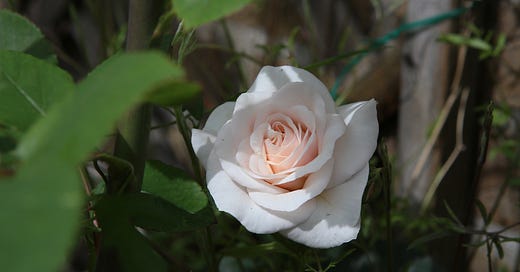Literary Analysis: The Garden Party
A literary analysis of short story "The Garden Party", by Katherine Mansfield
The following analysis was used as my mid-term assignment for a literary course I’m following in my Bachelor’s Degree. It’s an analysis on the short story “The Garden Party” by the Katherine Mansfield. The short story explores the loss of innocent in the protagonist of the story, Laura Sheridan. The story also appears to give a broader commentary on class differences through the subtle use of imagery throughout.
The version here is an adapted version, it is not the version I submitted.
Step One: Flower Imagery in the Garden Party
Plants have been used in literature to describe people and places without being overly explicit. Throughout Katherine Mansfield’s “The Garden Party” flowers and plants are used to indicate the socioeconomical background of Laura Sheridan, the short story’s protagonist. This paper will analyse how the use of flower imagery demonstrates the colonialist background in “The Garden Party”.
The short story “The Garden Party” takes place in the early 1900’s in New Zealand, the time at which Mansfield herself was alive. A time during which there was a clear division between poor and rich. The divide between affluent and impoverished is shown early on in “The Garden Party through the descriptions of the plants around the house. The flower imagery turns out to be important to understand the story, although the imagery of the flowers appears unimportant at a surface level. Mansfield starts by illustrating the opulence of the European flowers. Mansfield mentions how the “dark flat rosettes where the daisy plants had been seemed to shine” (1), which creates an image of a perfectly curated lawn. Mansfield proceeds to describe the large number of roses and asserts that roses “are the only flowers that impress people at garden parties” (1). Through the description it becomes clear that the lawn represents the characterization of the higher middle class and the lower upper class. By describing the perfectly kept garden Mansfield displays the intolerance to any sign of imperfection. The flowers all appear to be chosen specifically to emphasize this. Shortly thereafter, Laura suggests placing a marquee in front of the “lily-lawn” (2), a species of plants native to Asia. After this it is decided to place the marquee in front of the karaka-trees in the garden, trees that are native to New Zealand. Although Laura remarks on the loveliness of the trees, she also comments the following: “Must they be hidden by the marquee? They must” (3). Covering the karaka-trees up for the party suggests that the covering of the native species is necessary to preserve the status of the family. Lastly, the florist delivers canna lilies, yet another exotic, imported flower. The lilies are described as “big pink flowers, wide open, radiant, almost frighteningly alive” (558). The description of the lilies reaffirms the idea that the imported flowers are superior to the native species. The colonialist undertone becomes apparent through the treatment of the different flora in the garden. The contrast between showcasing the foreign flowers and concealing the native karaka-trees makes it evident that for the middle-class Sheridan family it is necessary to hide the trees to maintain their image.
The use of flowers in “The Garden Party” appears to be an allegory for the treatment of native cultures under the influence of colonialism. By having the workmen and the Sheridan family displace and obscure the native species and celebrate the imported ones, Mansfield creates a narrative for the middle class that appears to criticize the harsh reality of the colonialist early 1900’s New Zealand.
The article referenced in Step Two:
Step Two: critical discussion of a secondary source
To further analyse Katherine Mansfield’s use of flower imagery in “The Garden Party” I analysed the article “Consuming Beauty: Aesthetic Experience in Katherine Mansfield’s ‘The Garden Party’”. In this article Karen L. Shaup explains how Laura sees the world through the aestheticism of the colonial ideology of her middle-class family. This in turn creates a form of character growth where the story appears to criticize the very ideology Laura grew up with. Shaup claims that “Laura’s perceptions are inconsistent” (227). Shaup explains how Laura goes from using aestheticism as a critique on the colonial class system to aestheticizing Scott’s body “from a consumerist perspective” (227). However, I do believe this is consistent to tendencies Laura seems to display earlier on in “The Garden Party”. When talking with one of the workmen she was surprised by how much appreciation the worker had for the lavender. The surprise came across as patronizing, not as endearing. It was as if she was asking how a working-class man could ever comprehend the beauty of the aestheticism of the flowers. The same sentiment is shared by her mother later in the story when she says “People of that class are so impressed by arum lilies.” (9). Shaup seemed to imply there is a broader character arc where Laura appears to criticize the elitist aestheticism of her family for a longer amount of time. I believe this arc ended much sooner than Shaup claims it did. Mansfield reaffirms that Laura cannot escape the elitist views of her family, by suggesting Laura would be so amazed by the awareness of the workman and the later exclamation of Laura’s mother. What started off as an evaluation of classicism through the eyes of Laura quickly turned out to be an allegory to confirm for the reader that even those who criticise are bound to be held back by their upbringing.
Chapter two of “Michael’s Rose” will start soon…-ish





